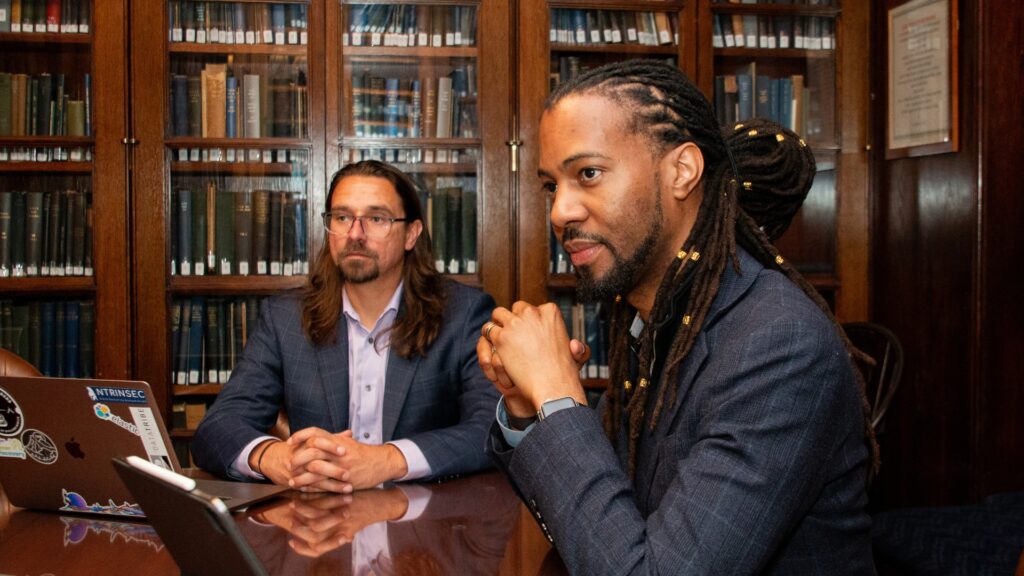In high-performing organizations, the real challenge is not lack of effort, but lack of focus. Teams are often pulled in too many directions; saying yes to every request, meeting, or task in the name of collaboration. Yet without clear boundaries, even the most engaged teams can find themselves overwhelmed and misaligned.
This blog unpacks how true team cohesion helps teams choose wisely. We will explore what cohesion really means, how it shapes team behavior, and why learning to say no to low-impact work is a crucial part of working smarter. For leaders and contributors alike, mastering this balance is essential to building sustainable momentum, protecting well-being, and achieving meaningful outcomes together.
What Is Team Cohesion?
Team cohesion is how connected and united team members feel with each other. It’s the sense of belonging and teamwork that makes people want to contribute, stay involved, and work toward shared goals.
A cohesive team does not just consist of individuals working in parallel. Instead, members genuinely trust and support one another. They communicate openly, respect differences, and hold each other accountable.
Think of a well-coached soccer team. Every player has a distinct role, but they rely on each other to succeed. They pass the ball with intention, adapt quickly, and work together to win. Their success is not just about individual talent but about how well they move as a team.
That same dynamic applies to workplace teams. When team unity is strong, work feels smoother, more purposeful, and more fulfilling.
Why Is Team Cohesion Important?
When a team is cohesive, everything tends to work more smoothly. People feel more connected, communication improves, and goals are easier to reach.
Here’s why cohesion matters:
- Better teamwork
In a cohesive team, everyone understands their responsibilities and how their work fits into the bigger picture. Team members are more likely to step in and support each other, making collaboration feel natural and efficient. - Faster progress
When there’s strong alignment and clear communication, there’s less room for misunderstandings or duplicated efforts. Work moves forward faster because the team is on the same page. - Less stress
Cohesive teams create a safe environment where people feel comfortable sharing ideas, asking for help, or admitting when something goes wrong. This openness reduces pressure and prevents problems from escalating. - Stronger relationships
Team cohesion builds trust and respect. Instead of just working alongside each other, teammates build genuine connections. These relationships create a more enjoyable and supportive work environment. - Shared wins
In cohesive teams, success is not just individual, it’s collective. When the team reaches a goal, everyone feels proud because they know they contributed to something meaningful together.


In essence, cohesion removes friction from the everyday. It transforms how teams engage, respond to pressure, and commit to shared outcomes.
What Makes a Team Cohesive?
Cohesion does not happen by accident. It is built on a few key elements that help team members trust each other, work well together, and stay aligned.
Here are the foundations of a strong, connected team:
Trust
Team members need to believe that they can rely on each other. Trust means knowing that everyone will follow through on their responsibilities and be honest when they need help or make a mistake. It creates a sense of safety that strengthens the whole group.
Communication
Open and honest communication keeps everyone in sync. When team members share updates, ideas, and concerns regularly, nothing gets lost or misunderstood. This helps avoid confusion and ensures that everyone has the information they need to do their best work.
Shared goals
Cohesive teams move in the same direction. When everyone understands what the team is working toward, it is easier to make decisions, set priorities, and stay motivated. No one is left guessing or working on something that doesn’t matter.
Respect
Respect means listening to each other, valuing different viewpoints, and treating everyone with kindness. It creates an inclusive space where people feel confident to contribute and know they are appreciated.
Accountability
In a strong team, people take ownership of their actions. They meet their commitments and admit when something goes wrong. This sense of responsibility builds trust and helps the team learn and grow together.
When these foundations are in place, cohesion becomes more than a value. It becomes a visible advantage that drives clarity, accountability, and real momentum.
What Happens Without Team Cohesion?
When team cohesion is missing, even the most talented individuals can struggle to perform at their best. The team might still be busy, but progress slows and frustrations build. Here’s what tends to happen:
- People work alone instead of together.
Without a sense of unity, team members become disconnected. Instead of collaborating, they stay in their own silos, focusing only on their individual tasks. This weakens teamwork and makes it harder to solve problems or share ideas. - There’s more arguing or blaming.
When people do not trust or understand each other, even small issues can lead to conflict. Mistakes are more likely to be met with blame rather than support, which damages relationships and lowers morale. - Work gets repeated or forgotten.
Poor communication and lack of coordination often lead to confusion. Tasks may be done twice or not at all, which wastes time and effort. It also creates frustration, especially when no one is sure who is responsible for what. - Goals aren’t clear, and no one feels motivated.
Without shared goals, people lose sight of the bigger picture. They may feel like their work does not matter or that they are not working toward anything meaningful. This lack of direction leads to disengagement and low energy across the team.


In cohesive teams, team alignment drives better choices. People understand what matters and have the clarity and support to say no to work that distracts from shared priorities. Cohesion is not just about working together; it is about choosing wisely, as a unified team.
What Real Team Cohesion Looks Like
Not every group working together is truly a team. To understand how cohesion strengthens teams and helps them say no to low-impact work, it’s helpful to clarify what cohesion really looks like.
Imagine two buses: One is filled with commuters heading in different directions, and the other carries a team to a championship. The difference is not who is on board; but how aligned they are in purpose, trust, and accountability.
| Key Characteristic | In a Group | In a Cohesive Team |
| Shared Goals and Values | Individuals focus on personal tasks or siloed outcomes. | Everyone works toward a shared goal that benefits the whole team. |
| Trust and Open Communication | Communication is limited or cautious. | Communication is open, respectful, and focused on solutions. |
| Willingness to Step In | People stay in their lanes and avoid extra responsibility. | Members step up when needed and support one another actively. |
| Group Accountability | Success and failure are seen as individual issues. | The team owns outcomes together, learning and celebrating as a unit. |
In cohesive teams, alignment drives better choices. People understand what matters and have the clarity and support to say no to work that distracts from shared priorities.
The Hidden Cost of Low-Impact Work
Not all work carries equal weight. Low-impact work is the hidden tax on teams: it eats time, drains energy, and delivers little in return. These are the to-dos that fill calendars, clutter backlogs, and create the illusion of productivity while diverting attention from what truly matters.
Even well-intentioned teams can fall into the trap of doing more instead of doing better. This often comes from a desire to be helpful, look busy, or avoid conflict. But when everything becomes a priority, nothing really is.
The cost: cohesion quietly begins to unravel.
- Creates overload and resentment: Team members feel stretched thin and undervalued.
- Pulls focus away from shared goals: Busywork distracts from what truly matters.
- Leads to burnout and inefficiency: Energy is drained without meaningful progress.
Cohesive teams protect their time with intention. They know that saying no to low-impact work is not resistance, it’s respect.
The Real Risk of Always Saying Yes
Saying yes to everything may seem like the path to being a great teammate; but in reality, it often backfires. Overcommitting does not just affect individual performance, it quietly erodes the foundation of organizational alignment.
- Burnout builds quickly when there is no space to recharge or prioritize.
- Deadlines start slipping as focus gets divided and quality drops.
- Team performance suffers when one overloaded member becomes a bottleneck.
- Low-impact work feels helpful in the moment but pulls energy away from strategic goals.
Even the most dedicated employees can become overwhelmed and disengaged when they say yes too often. Cohesive teams know when to step up and when to step back to protect their collective rhythm.
Why Saying No at Work Feels So Hard
Saying “no” is not just a time-management issue, it’s deeply emotional and psychological. Here’s why we struggle, even when it is clearly the right thing to do:
- The Fear of Rejection
At a basic level, our brains are wired to seek acceptance. In the workplace, this often means avoiding anything that could make us appear uncooperative or difficult. We fear damaging relationships or losing the respect of our peers and leaders. - The Need to Prove Ourselves
In competitive work cultures, there is constant pressure to say yes to demonstrate that you are capable, driven, and a team player. Saying no can feel like missing a chance for recognition, advancement, or leadership opportunities. - FOMO at Work
The fear of missing out is not limited to social media. It shapes how we approach tasks too. We worry that saying no might mean passing up a career-changing project, a unique learning moment, or a chance to impress senior leadership. - Underestimating the Real Cost
We often convince ourselves a task will only take a few minutes, or that we can fit it in somehow. But most of us underestimate how much time and energy a new task actually requires, especially when we are already stretched thin. - The Comfort of Saying Yes
Saying yes brings immediate relief. There is no awkward moment or risk of disappointing someone. But that short-term comfort often creates long-term consequences, such as scattered focus, declining work quality, and creeping burnout.
The first step to healthier boundaries is recognizing the automatic patterns behind our YES. When we pause, reflect, and respond with intention, we not only protect our energy but also strengthen the cohesion and effectiveness of our team.
10 Low-Impact Tasks You Shouldn’t Be Afraid to Decline at Work
Saying no is not a sign of disengagement. In aligned teams, it is a strategic act that protects clarity, focus, and collaboration. Low-impact tasks may seem small, but they slowly chip away at a team’s momentum.

Here are ten examples to help you draw the line where it matters.
1. Outdated or Ineffective Tasks
Legacy workflows that exist out of habit rather than impact.
When to Say No: If the process no longer adds value or has a more efficient alternative.
2. Tasks Misaligned with Your Role or Goals
Requests that fall outside your responsibilities or team priorities.
When to Say No: If the task does not meaningfully support your function or focus.
3. Unnecessary or Poorly Structured Meetings
Meetings without a clear purpose, agenda, or actionable outcomes.
When to Say No: If your input is not essential or the meeting can be handled asynchronously.
4. After-Hours Responsiveness
The pressure to respond to emails or messages beyond work hours.
When to Say No: When it disrupts your rest, focus, or personal boundaries.
5. Requests that Conflict with Your Values
Work that feels ethically questionable or personally misaligned.
When to Say No: When the task risks your credibility, trust, or sense of integrity.
6. Unrealistic Deadlines on Low-Priority Tasks
Time-sensitive requests that are not tied to strategic objectives.
When to Say No: If taking it puts more meaningful deadlines or work at risk.
7. Writing References You Cannot Confidently Support
Requests to endorse someone you cannot fully vouch for.
When to Say No: If your name would be linked to performance you do not stand behind.
8. Taking on More Work When Already at Capacity
Extra assignments that stretch your time and energy too thin.
When to Say No: If the quality or delivery of your current work would be compromised.
9. Doing Tasks Better Suited to Someone Else
Assignments that fall outside your expertise or ownership.
When to Say No: When another person is more equipped or positioned to handle it well.
10. Becoming the Team’s Default Go-To for Everything
Regularly being relied on for miscellaneous tasks simply out of habit.
When to Say No: When these requests prevent you from doing your highest-impact work.
Saying no to low-impact tasks is how teams stay focused and aligned. When everyone protects their time, the whole team moves forward with more clarity and purpose.
Practice Phrases for Graceful Declining
Saying “no” does not have to feel awkward or negative. With clear and respectful language, you can protect your focus while showing that you still care about team goals. Here are a few helpful phrases your team can use:
- “Can we revisit this next week when I’ve wrapped up [X]?”
- “I want to give this the focus it deserves, and I can’t right now.”
- “Let’s look at what I can drop or shift to make space.”
- “I’m currently at capacity, but happy to recommend someone else who might help.”
- “This sounds important. Can we align on how it fits into current priorities?”
- “I’d like to provide support, but I need to check how this affects my other commitments first.”
- “My plate is full at the moment. Could we explore other options together?”
- “To do this well, I would need to move something else. Can we talk through that?”
These simple responses make it easier to set boundaries while keeping trust and collaboration strong.
Building Teams That Thrive Together
At ARIA NOVA, we partner with organizations to move beyond busywork and into purposeful collaboration. Our strategic consulting and team enablement services are built to foster emotionally intelligent, human-centered cultures where cohesion and clarity drive a collaborative culture.
From breaking down silos to building aligned priorities, we help teams streamline their collaboration, reduce burnout, and focus on the work that truly moves them forward. With bespoke solutions rooted in real-world dynamics, we empower teams to make smarter choices, protect their energy, and lead with confidence.
Let’s create a culture where your team does more than deliver. Let’s build one that thrives.

Choosing Cohesion Over Chaos
Cohesion is more than a feel-good concept, it is the foundation that allows teams to work with purpose, protect their energy, and make smarter decisions. Without alignment, even committed teams can spin their wheels, busy but disconnected from what truly matters. But when teams build real cohesion, they gain the clarity and trust needed to focus on what matters most. Saying no becomes easier because everyone understands the bigger picture. It is not about doing less. It is about doing the right work, at the right time, together.
At ARIA NOVA, we help organizations foster these conditions by designing emotionally intelligent systems, guiding cultural alignment, and supporting human-centered change. Because the future of work is not about doing more. It is about sustained performance, achieved together.
Connect with us on LinkedIn to learn how to move your teams from busywork to purposeful collaboration. Together we’ll build workplaces where focus, alignment, and well‑being drive results.

DESIGNED BY Social Circle
© 2024 ARIANOVA,
a Connexus company
PRIVACY POLICY
Terms of Service
documentation